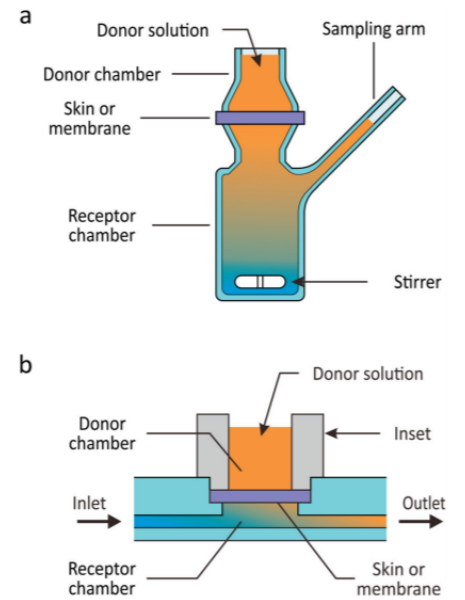Liposome Penetration and Permeation Test
Creative Biostructure has comprehensive liposome techniques and equipment to conduct precise analysis and characterization of liposomes. Aiming at the special formulation of liposomes in transdermal drug delivery system, Creative Biostructure offers penetration and permeation test to evaluate skin absorption efficiency for transdermal drug delivery.
Why penetration and permeation test are important to liposome?
Topical drug delivery offers specific benefits over other administration routes for both local and systemic effects, but the barrier nature of the skin presents a major obstacle for many drugs delivered into and through it. As a novel approach for drug delivery, liposomes are developed with different modifications to meet particular demand. Transferosomes and ethosomes are two important formulations to deliver active components through stratum corneum (SC) by adding penetration enhancers. Considering their great potentials in transdermal drugs, ophthalmic drugs and cosmetics, it is essential to assess their effectiveness in terms of penetration and permeation abilities.
 Figure 1. Schematic illustrations of (a) the static Franz diffusion cell and (b) a permeation unit of the microfluidic permeation array (μFPA). In the μFPA, skin or a synthetic membrane is placed in the permeation chamber, and its edges sealed by an inset defining the diffusion area. The receptor chamber is provided with inlet and outlet channels, and it is perfused with a receiver solution into which the compound of interest permeates. (The Royal Society of Chemistry, 2017)
Figure 1. Schematic illustrations of (a) the static Franz diffusion cell and (b) a permeation unit of the microfluidic permeation array (μFPA). In the μFPA, skin or a synthetic membrane is placed in the permeation chamber, and its edges sealed by an inset defining the diffusion area. The receptor chamber is provided with inlet and outlet channels, and it is perfused with a receiver solution into which the compound of interest permeates. (The Royal Society of Chemistry, 2017)
Liposome penetration and permeation test methods
The in vitro skin penetration and permeation studies are often performed traditionally in Franz diffusion cells. In this method, the SC side is facing the donor chamber and the dermal side is facing the receiver chamber. Following a similar mechanism as Franz diffusion cells, microfluidic permeation array (μFPA) is a novel microfluidic platform for skin permeation testing. However, μFPA is made of thermoplastic material at a fraction cost of Franz diffusion cells, also simultaneous experiments could be run with tuned flow rate in this assay. The drug concentration in receptor solution can be detected by sampling and analyzing over a period of time. Creative Biostructure offers suitable surface skin and membrane to conduct the testing, including synthetic membranes, excised animal or human skin, and skin organotypic cultures. We normally use reliable analyzer HPLC to measure the compound of interest within a rapid turnaround.
Creative Biostructure has capability to achieve one-stop solution of penetration test, calculation, and results analysis. We provide strong support for liposome characterization. Please contact us to share more details in your research and get a formal quote.
Ordering Process
References
- Eman Abd, Michael S. Roberts, Jeffrey E. Grice. (2016) A comparison of the penetration and permeation of caffeine into and through human epidermis after application in various vesicle formulations. Skin Pharmacol Physiol 29:24–30.
- Nenghong Sun, Yanyan Zhu, Lei Yuan et al. (2000) Nano-liposomes of entrapment lidocaine hydrochloride on in vitro permeability of narcotic. Pak. J. Pharm. Sci. 28: 325-328.
- Pajaree Sakdiset, Yuki Kitao, Hiroaki Todo et al. (2017) High-throughput screening of potential skin penetration-enhancers using stratum corneum lipid liposomes: preliminary evaluation for different concentrations of ethanol. Journal of Pharmaceutics. Article ID 7409420.
